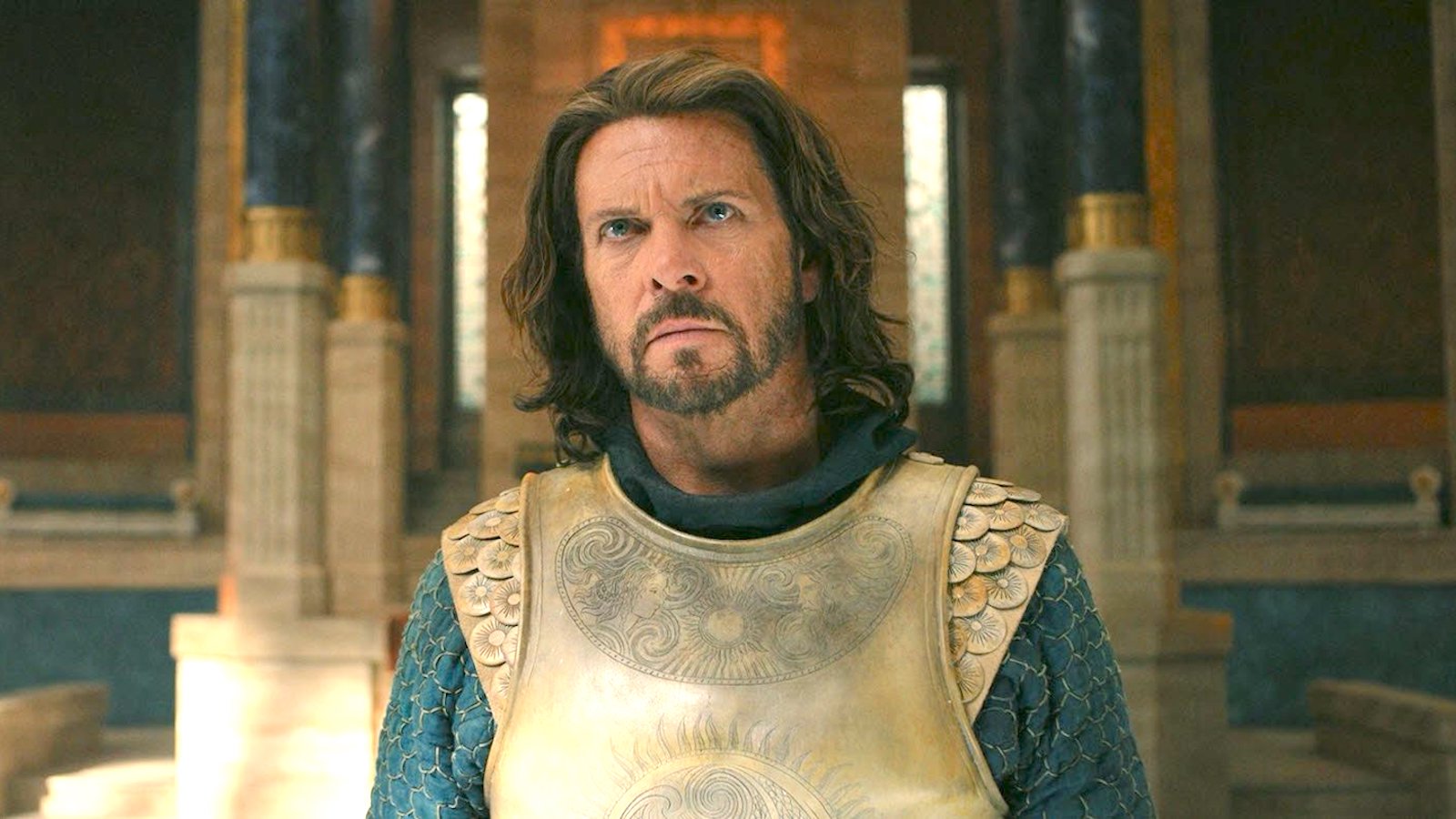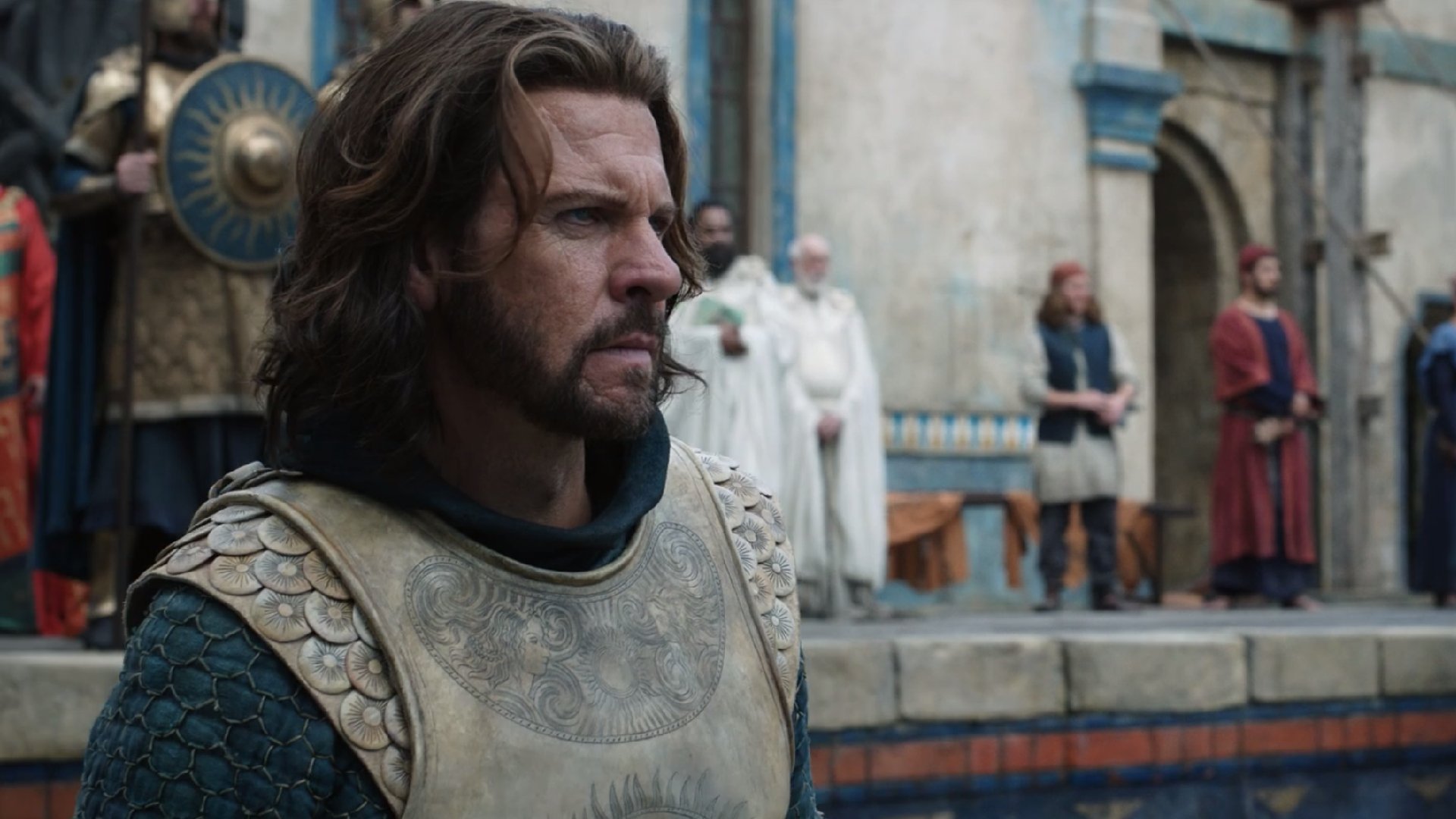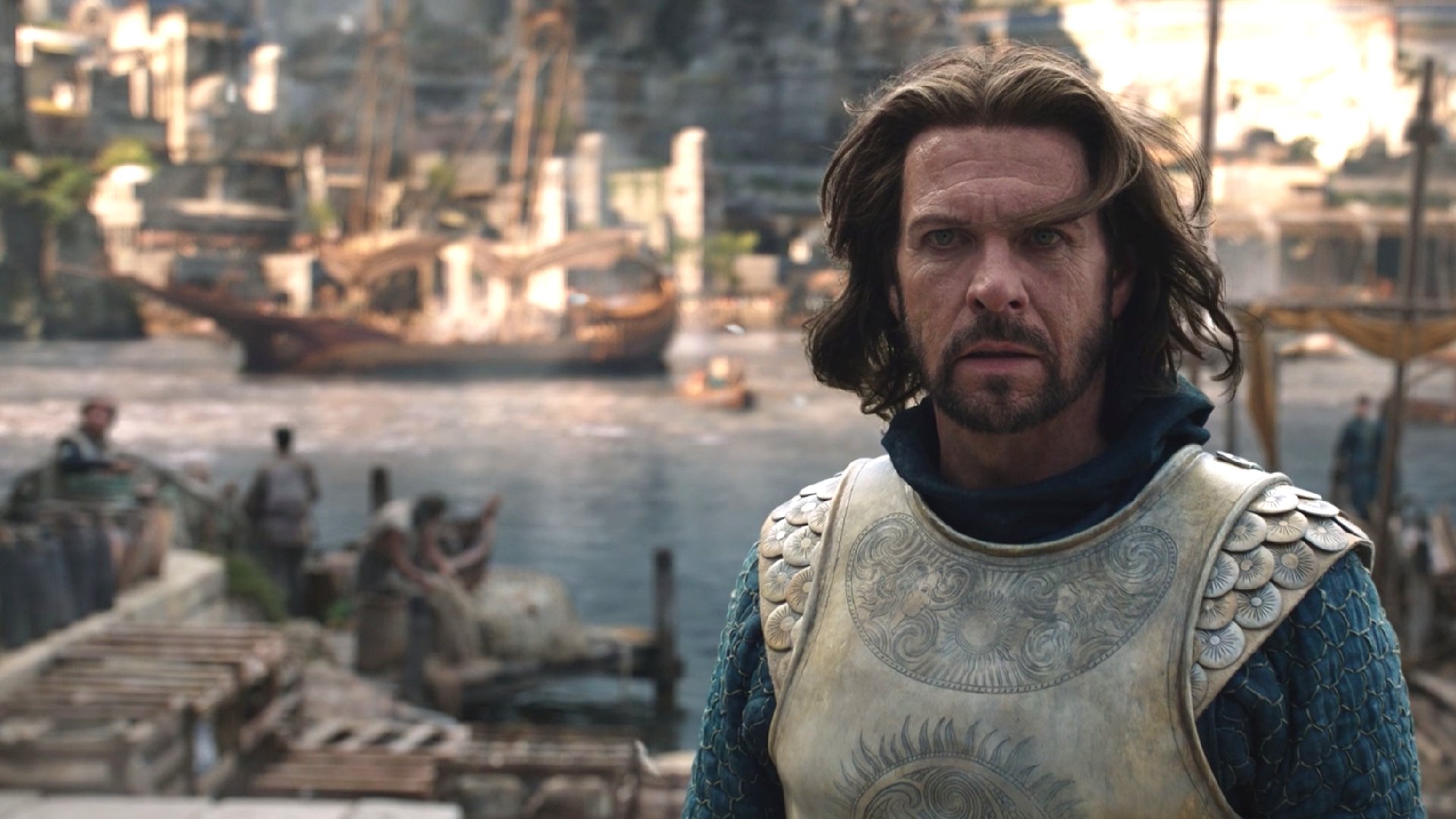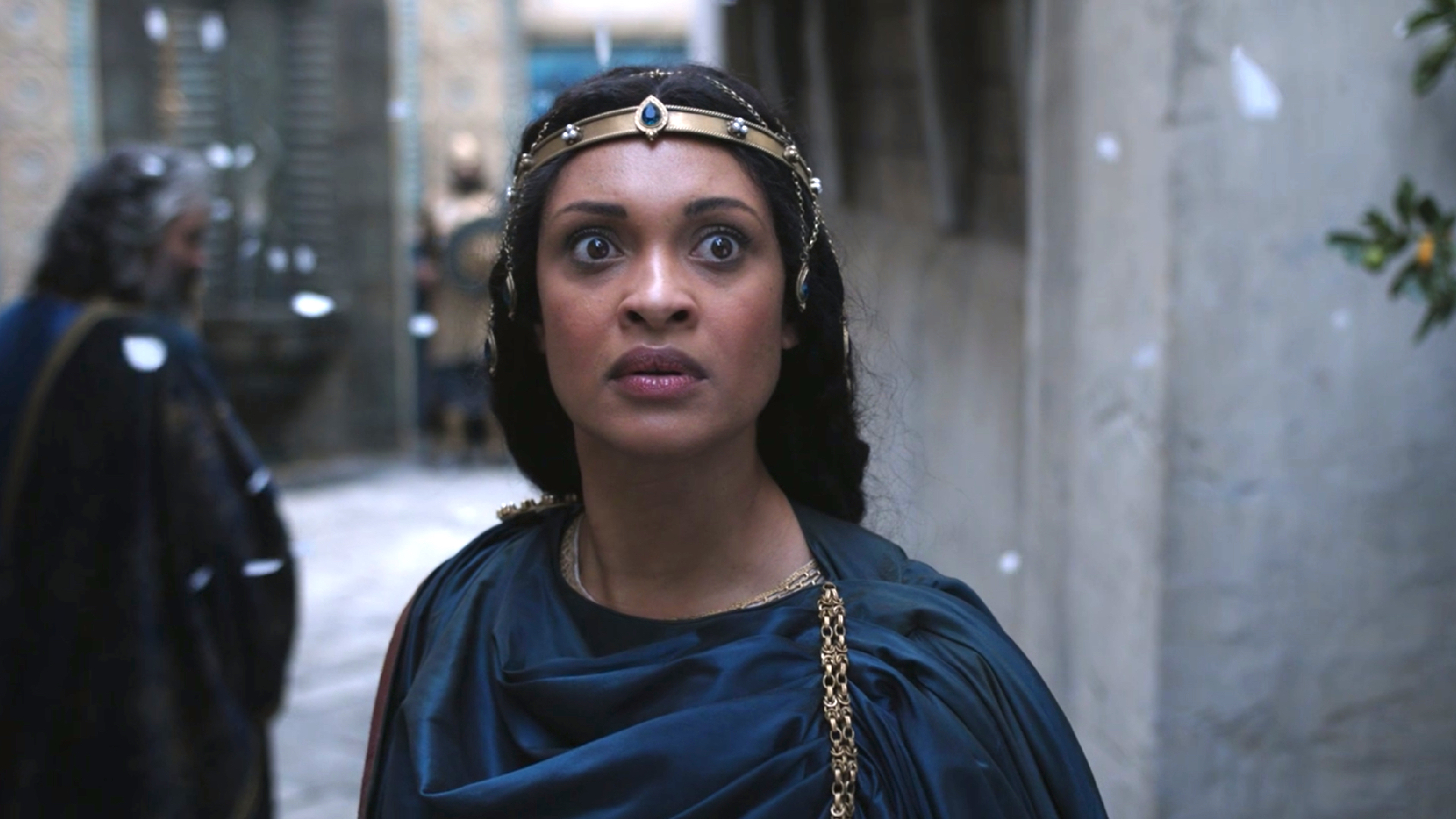Isildur is one of the most important names in all of J.R.R. Tolkien’s legendarium. He also happens to be one of the main characters in Amazon’s Rings of Power, so what can we expect to see from him in the course of this television adaptation?
After all, we’re talking about the man who not only led the remaining Edain against Sauron in the Second Age, but singlehandedly defeated him by cutting the One Ring from his fingers. It’s not as if the Gondorian king was the only instrumental force in the Dark Lord’s final defeat — but he was the one to deal him that fateful blow — without which the battle may have been lost, in truth.
We know that Isildur was one of the Numenorean faithful. We also know that he survived the downfall of the island kingdom and came to Middle-earth to found his own. When Isildur died after many decades of stewardship on Arda, he was a king himself, though one who cursed all that would follow his line. His treachery regarding the One Ring is the chief reason that the line of kings broke, and Gondor fell to ruin. Even many thousands of years after his passing, Isildur’s heir, Aragorn, was haunted by the same demons that brought about the demise of his blood.
So what can we actually learn about the character’s past from The Silmarillion and the Unfinished Tales?
*Note that the following article contains possible spoilers for future Rings of Power storylines, so read ahead at your own discretion.
The birth of Isildur and the rise of the Faithful
Late into the Second Age, the kings of Numenor grew wary of their reluctant alliance with the Elves, and the general populace slowly turned their backs on beliefs and values that had founded the island realm in the first place. Whereas they once gave prayers to the Valar for helping them found the island kingdom after the War of Wrath, the Numenoreans grew to scorn their heritage, too proud to realize that their accomplishments were caused by more than the sum of their trials.
Isildur was born in this tumultuous political landscape in 3209 SA. He was the eldest son of Elendil and ten years Anarion’s senior, his younger brother. The family had allegiance to the Faithful, a minority of Numenoreans who realized the errors of their people and tried to remain truthful to the old values as much as possible.
When Tar-Palantir ascended to the throne of Numenor, he tried to restore the old ways and save his kingdom from a prophesied doom. The people had lost their light so much, however, that they would have none of it. And so it was that when Tar-Palantir eventually died, Ar-Pharazon, the leader of the King’s Men — a party opposing the Faithful and advocating a policy of “Numenor first” — seized power and started to take Numenor down the path of ruin.
Ar-Pharazon would butt heads with Sauron and even defeat his armies, taking the Dark Lord prisoner. The Enemy, meanwhile, grew envious of Numenor and its glory and riches and sought to bring about its downfall, so he whispered closely into the king’s ear and poisoned his thoughts. The situation became so dire that Numenoreans started openly worshipping Morgoth and making human sacrifices in his name. The White Tree of Nimloth also started withering, and tyrant king Ar-Pharazon began to fear his inevitable death.
Sauron encouraged the king to challenge the Valar and set sail for the Undying Lands with a great host. A massive armada was formed, but Elendil and his kin started building ships of their own to escape Numenor’s doom and Isildur stole a sapling of Nimloth to carry with him.
And so it was that the downfall of Numenor came, with Eru Iluvatar, the creator of the world, sending forth a terrible storm that destroyed Ar-Pharazon’s armies before they even made it to the shores of Valinor. The storm swept through Numenor and buried the island kingdom deep within the sea. The only people to have been spared this doom were the Faithful, who sailed toward Middle-earth.
The formation of Gondor and Arnor, and the War of the Last Alliance
Elendil went north and set up the kingdom of Arnor, while Isildur and his brother Anarion sailed east and founded Gondor. Anarion resided in Minas Anor, or Minas Tirith as we know it, and Isildur built his dwelling of Minas Ithil close to Mordor. Their joint capital was Osgiliath, the Citadel of the Stars, where they ruled together.
It was at this time when Isildur met the King of the Mountain Men, who swore allegiance to Isildur’s cause upon the Stone of Erech that he would aid the king in all the wars to come. But when the moment came and Isildur called on them to fight against Sauron, they refused. Isildur set a curse upon them that they should never rest until their oaths were fulfilled, which happened during the War of the Ring when Aragorn sought them out.
Arnor and Gondor would oppose Sauron for many years to come, and when the Dark Lord sent forth his army to conquer Middle-earth, Anarion held out in Minas Tirith as Isildur made his way to Arnor to ask his father for help. A great council formed, and the Elves and Men united to march against the dark lord in the War of the Last Alliance.
They pushed the shadow back to the very slopes of Mount Doom and crushed its armies, but as we learned in the prologue to The Fellowship of the Ring, “the power of the Ring could not be undone.” Sauron himself came forth from his tower of Barad-Dur and started laying into the armies of the light. Gil-Galad and Elendil engaged him in single combat, both succumbing to the dark lord’s terrible might. In this moment, Isildur takes up Narsil, his father’s broken sword, and cuts off Sauron’s fingers, causing the dark lord to dissipate and leave the One Ring behind.

The Elves urged Isildur to destroy the Ring in the fires of Mount Doom, but the Gondorian king was drawn to the power of the One and bound all those who would follow his line to its fate.
Following his father’s death, Isildur decided to rule Arnor and leave Gondor to Anarion’s son. In the second year of the Third Age, Isildur set out toward Arnor with a retinue of his knights, but was ambushed on the way by a company of orcs. Isildur tried to escape through the River Anduin, but when he entered it, the Ring left his finger, and the Orcs who’d spotted him in the water shot him full of arrows.
Three thousand years later, the Elves of Rivendell would forge the shards of Narsil into Anduril, the Flame of the West, to be wielded by Aragorn — son of Arathorn — as the last surviving member of the line of kings. Aragorn resisted the temptation of the One Ring and united the Men of the Third Age against Sauron. He vanquished the dark lord’s armies and assured Frodo’s success in the last push against Mordor, thus being crowned king and reuniting the realms of Gondor and Arnor as Elessar.
















